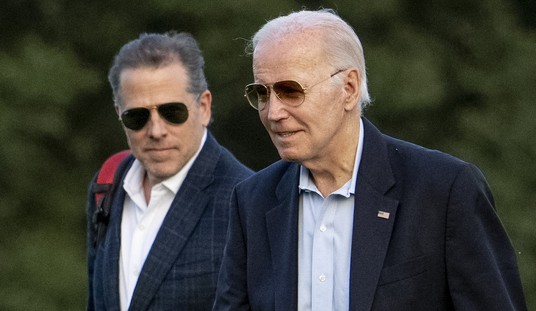
Whoa.
Not good news: Domestic terror arrests are on the rise.
According to a report by George Washington University’s Program of Extremis (POE), since September 3rd, police departments and the FBI have taken into custody 24 people for ISIS-related offenses.
What’s more, in the first eight months of the year, such arrests doubled those comprising the entirety of 2018.
Researcher Andrew Mines explained to The Washington Free Beacon that one possible explanation for the increase is a migration of the organization from its previous focus on Iraq and Syria (hence its name). Presently, ISIS is widening its wings:
“ISIS’s messaging received a revamp with the end of the physical caliphate. They were taking a lot of hard hits throughout 2018 but with this kind of steady decline and now this resurgence through different affiliates through the globe, the messaging now is both remaining but also expanding, spreading throughout the globe.”
In 2019, the terrorist group suffered at the hands of a U.S.-led coalition. Home bases in Syria and Iraq were destroyed, and President Trump declared victory.
However, the collective has launhed attacks in Russia, Sri Lanka, and the Philippines.
In 2018, a White House paper noted the killer cabal’s resiliency:
Despite many setbacks, ISIS maintains a sophisticated and durable media and online presence that allows it to encourage and enable sympathizers worldwide to conduct dozens of attacks within target countries, including the United States. The increase in attacks by persons mobilized to violence in the United States underscores the ability of ISIS to inspire terrorist attacks.
Due to the U.S.’s success in the Middle East combating the Islamic State of Iraq and Syria, Andrew suggested we could be looking at more carnage in our states:
“When that [ISIS] territory is shrinking and the international community is closing down the gateways and becoming a lot more savvy with how individuals are able to use different travel routes and entry points into countries [with ISIS presence,]…the messaging from the top is going to be that domestic attacks are a more viable option.”
So what kind of threat are we facing? As an example of the arrests this year, a green-card-carrying Bangladeshi planned to arm himself with a Glock and suicide vest and “die fighting like a man” in an attack on Times Square.
Additionally, U.S. Army infantryman Mark Domingo plotted to make murderous mayhem at a rally in Long Beach, California using an IED (see my coverage of that story here).
Perhaps mercifully, the uptick in sinister intent is spiced with the involvement of smaller-time — and, hopefully, easier to stop — amateurs, as observed by James Caragano, a national security expert for the Heritage Foundation:
“We’re not seeing anything like 9/11-style planning, which would be a real red flag. We’re not seeing sleeper cells or guys being shipped over here to organize activities.”
The domestic rise notwithstanding, growth isn’t exclusive to the U.S. — since Trump pulled troops from the region, the Defense Department indicates ISIS is slowly swelling in the Middle East, as well.
So what’s the future of terrorism? Whtever it may be, James says it’s a must to take partisanship out of the fight:
“You see this huge movement on the Left that wants to say, ‘Oh, we are seeing much more domestic terrorist attacks from white supremacists.’ Part of the reason we are seeing that is we are very good at targeting transnational threats. We have to keep doing that, not take the focus off that important national security threat.”
-ALEX
Relevant RedState links in this article: here.
See 3 more pieces from me:
Two Women In New York Plead Guilty To Planning Major Terrorist Attacks. The Details Are Frightening
Find all my RedState work here.
And please follow Alex Parker on Twitter and Facebook.
Thank you for reading! Please sound off in the Comments section below.














Join the conversation as a VIP Member